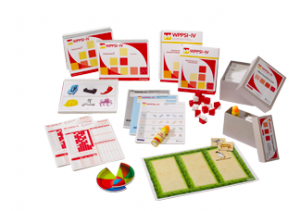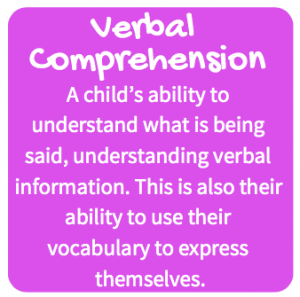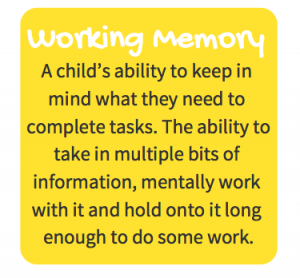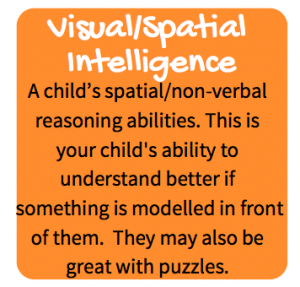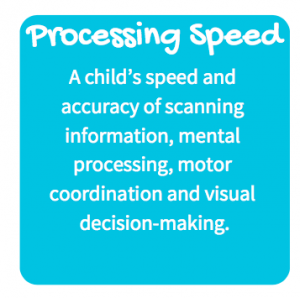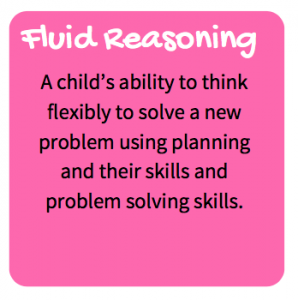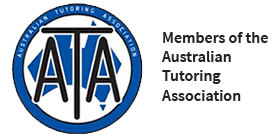A parent’s guide to cognitive assessments
How do school cognitive assessments actually work?
If your child struggles at school, the school may recommend a cognitive assessment. IQ is the most common measure of intelligence in education and is used to identify and provide funding level for children with special needs in the classroom. It is important to understand what IQ tests can and cannot do to help support your child in the classroom and beyond. Learning Works Geelong has compiled a pdf. cheat sheet to simplify this process for you.
What is intelligence?
- An ability to adapt to the environment
- The ability to learn new things
- The ability to use a range of mental processes such as memory and imagination
- It uses higher order thinking skills, like problem solving and reasoning
- It involves the ability to acquire and use knowledge
- It is dependent on the context and culture
What tests are used?
The most commonly used cognitive assessments in Victorian schools are the:
- Weschler Preschool and Primary Scale of Intelligence (WPPSI-IV) for children aged 2.6 to 7.7
- Weschler Intelligence Scale for Children (WISC-V) for children aged 6 to 16.11.
Which children are referred for an assessment?
- Those who have language or learning difficulties
- Children who may have an intellectual disability or other developmental behaviour disorders
- Children who are gifted or have high intellectual potential
- Children who are recommended an assessment by their primary classroom teacher.
What is the process?
Accessing Support – the school’s role
- If your child is struggling in one or more areas, or falling behind, your child’s teacher may recommend an assessment.
- This assessment is carried out by Student Support Services or SSS – A Department of Education Service.
- Before referring, the school will review previous recommendations and school actions.
- Your child’s progress and any evidence of learning difficulties will be discussed.
- The school and SSS will identify strategies to provide support.
What these assessments measure – 5 main ‘areas’ of intelligence
Verbal Comprehension
A child’s ability to understand what is being said, understanding verbal information. This is also their ability to use their vocabulary to express themselves.
Strengths in this area look like:
- Great writing skills
- Articulate, and able to express detail in ideas
- A great vocabulary, using a wide range of words
Weaknesses in this area look like:
- Struggling to understand instructions
- Becoming lost in multi-step directions and tasks
- Having difficulty expressing ideas
- Poor reading and writing skills
- Poor auditory memory skills
- Using black and white language
- Difficulty understanding abstract concepts or jokes, like sarcasm
- Struggling to comprehend verbal and language related information.
Fluid Reasoning
A child’s ability to think flexibility to solve a new problem using planning and their problem solving skills.
Strengths in this area look like:
- Thinking flexibly to solve new problems
- Drawing on problem solving skills to solve similar problems
Weaknesses in this area look like:
- Difficulty identifying patterns in relationships
- Difficulty identifying the ‘moral’ or overarching idea of the story
- Having a hard time summarising
- Finds it tough to transfer knowledge from one task to another
- Apprehensive to start new tasks and becomes frustrated without support
Processing Speed
A child’s speed and accuracy of scanning information, mental processing, motor coordination and visual decision making.
Strengths in this area look like:
- Quickly able to take in new information presented on the whiteboard at school
- Finds it relatively easy to keep up with the pace of the classroom
Difficulties in this area look like:
- Taking much longer than needed to problem solve under pressure, complete work and copy down sentences, recognise visual patterns and scan material
Working Memory
A child’s ability to keep in mind what they need to complete tasks. The ability to take in multiple bits of information, mentally work with it and hold onto it long enough to do some work.
Strengths in this area look like:
- Can easily take in a large amount of information in the classroom and process it accurately
- Able to follow complex verbal instructions
- Good at remembering all steps of directions
- Able to organise quickly and plan work tasks
- Great at mental arithmetic and can do large sums
Weaknesses in this area look like:
- Trouble following through on instructions
- Will only remember 1/4 of the instructions given
- Struggling to cope with all of the information presented in class
- Can only concentrate on one thing at a time
- Struggles to complete maths problems
- Struggles with complex problem solving and planning
Visual/Spatial Intelligence
A child’s spatial/non-verbal reasoning abilities. This is your child’s ability to understand better if something is modelled in front of them. They may also be great with puzzles.
Strengths in this area look like:
- Tackles hands on activities
- Greater understanding if something is modelled in front of them
- Good visual-spatial skills
- Good at analysing mathematical graphs, great with puzzles
Weaknesses in this area look like:
- Experiencing difficulty learning to read and to identify and remember all of the individual letters
- Handwriting can be disorganised on the page
- Experiencing difficulty drawing meaning from a maths problem
- Can get lost easily, may not find lost objects easily
What do these results mean?
Percentile Ranks
Percentile ranks reflects how a child performed compared to children the same age. Let’s say we lined up 100 girls the same age as Emily in order of ‘ability. The little girl sitting at position 1 would be the worst performing and 100 the best. If I told you that Emily was sitting at the 50th percentile, it means that she is RIGHT in the middle and performing as she should be for his age OR that she is performing better than 50% of children her age. With cognitive assessments, the Average Range falls within the 25th to the 75th percentile.
Standard Scores
Put simply, standard scores are these converted scores used to determine where your child’s cognitive abilities lie in comparison to other children his or her age and what range of ability he or she falls under. You’ll see ranges associated with standard scores for the indexes and Full-Scale IQ. As an example, any standard score between 90 and 109 falls within the Average Range.
Another way of thinking about cognitive test results is by viewing them on a Bell Curve. In a normal distribution of results, most results fall around the centre, which is average. Very few people 2% have IQ scores of 130+, while scores under 70 are also rare – with less than 2% of the population having this score. Therefore, most children and people fall in the average range and cluster around the middle.
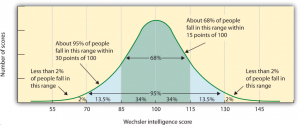
Ok, we have had an assessment, what do we do with the results?
The report you are given will make recommendations that teachers can use to develop a personalised learning plan.
The cognitive assessment is just the first step. Teachers, like those we have at Learning Works, who are trained in special education, must now implement a plan and strategy to help your child to overcome their learning challenges and capitalise on their strengths.
How can I help my child?
- Discuss the assessment with teachers and tutors to ensure the best strategies are being used to support your child with their learning
- Reduce distractions when asking your child to perform a task that is complex or new
- Your child’s self-esteem may be at risk. It is very important that your child’s classroom based work and homework is pitched at the right level that takes into account your child’s difficulties so they can experience success.
- Break down tasks into smaller steps
- Emphasise and repeat key points
- Encourage the development of your child’s intellectual strengths and teach them strategies to overcome their weaknesses
- Be aware of the limitations of the IQ score and the narrow set of abilities the score represents
- Get regular updates about your child’s progress from their teacher and tutor.
While a psychologist carries out the test, it is the teachers who model and implement the supportive strategies to help your child in and outside of the classroom.
Click the link below to download your copy of our pdf. – Learning Works Geelong parent’s guide to understanding assessments.



